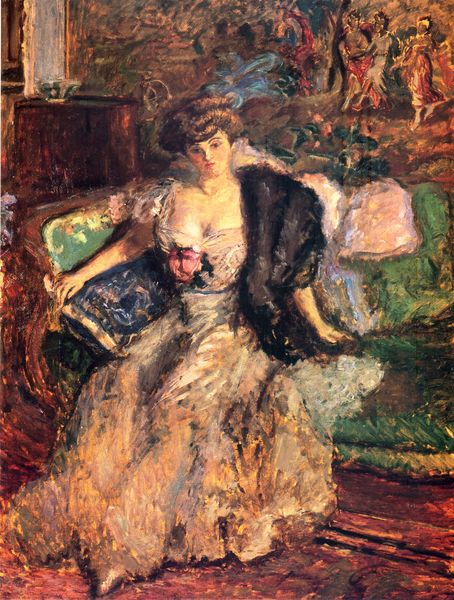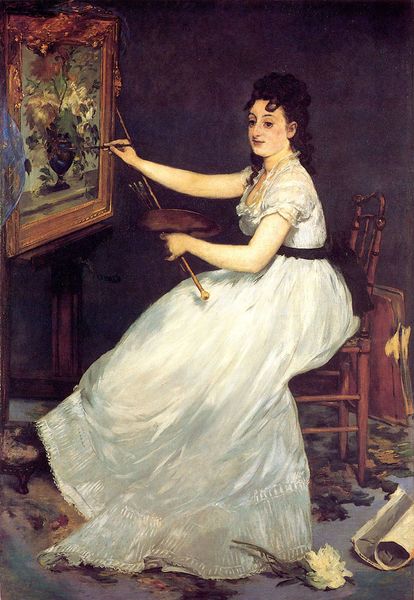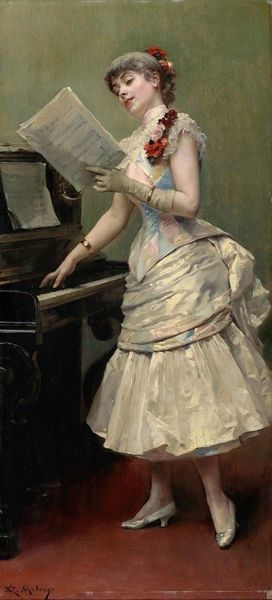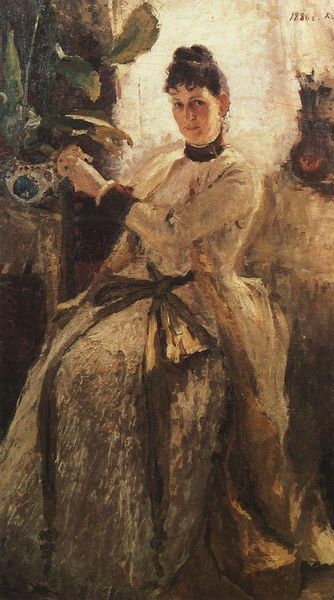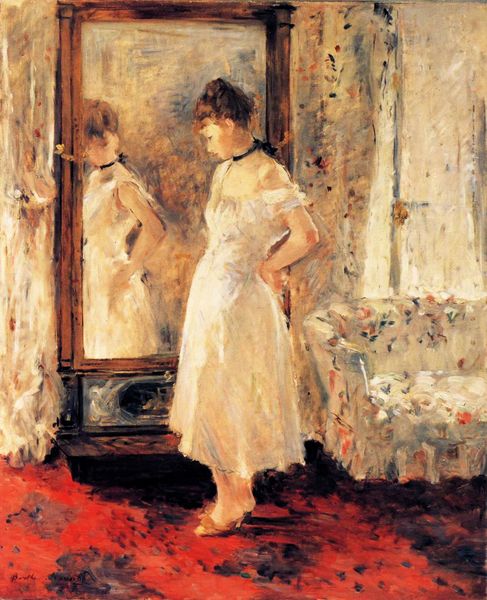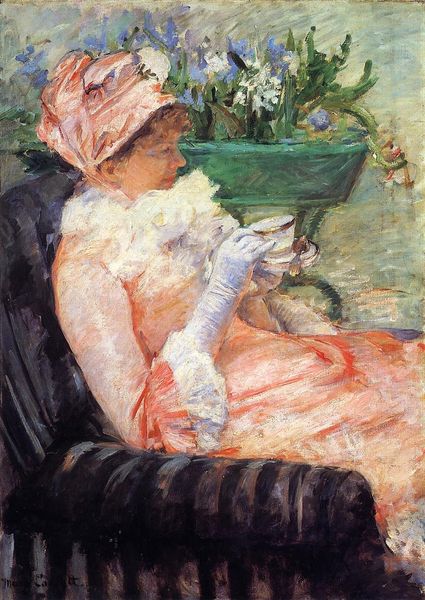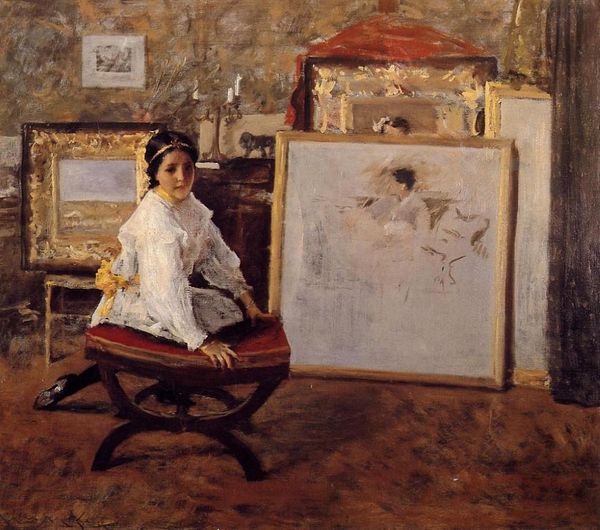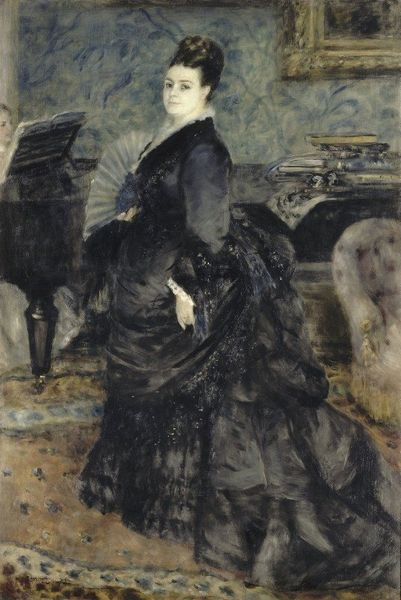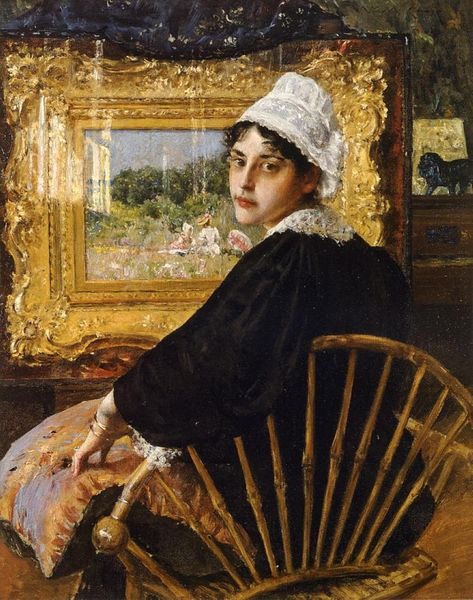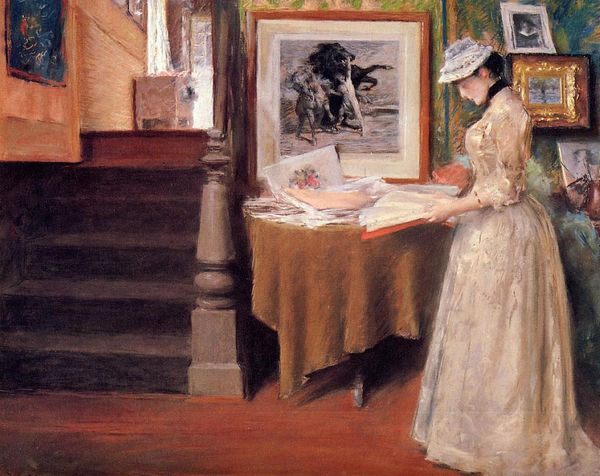
painting, oil-paint
#
portrait
#
painting
#
impressionism
#
oil-paint
#
oil painting
#
genre-painting
#
modernism
Dimensions: 154 x 115 cm
Copyright: Public domain
Why did this oil painting cause such a stir? ‘Nana’ by the French Impressionist Edouard Manet (1832-1883) was completed in 1877, but was quickly refused by the Salon of Paris. ‘Nana’ depicts a young woman in her boudoir. She stands in the centre of the canvas, body turned towards a mirror. In one hand, she holds a white powder puff used for applying makeup. Her pale blue corset and stockings compliment the sky-blue colour of the background wall. Pastel blue and white tones are typically associated with purity… yet, to the nineteenth century viewer, this painting was anything but innocent! The young woman in this painting is a courtesan, a prostitute for the wealthy elite. Courtesans were common in 19th-century Paris, and many lower-class women were able to build profitable careers in sex work. Exerting immense influence over the rich and powerful of high society, courtesans often led luxurious lifestyles. ‘Nana’ is an empathetic representation of a courtesan. Manet depicts the woman with an unabashed gaze – she looks directly out to the viewer, almost smiling. She seems bold and ambitious. Two extinguished candles have been placed on either side of the mirror. Why have their flames been put out? This symbolises dried up love, suggesting that the woman is motivated by money rather than desire. Manet’s choice to depict a partially dressed prostitute in a state of confidence was seen as horrendously immoral to the 1870s audience. After the Paris Salon rejected the work, it was placed in a shop window on the Boulevard des Capucines (a busy street in central Paris where prostitution was especially prominent). This almost life-size work offers a realistic glimpse into modern life. It reflects the shift which occurred in French painting around the 1860s. During this time, artists such as Manet abandoned mythological scenes and historical allegories. Instead, they turned to scenes taken from their own experiences in a burgeoning modern city. They forced the conservative viewers to stand face to face with the realities of their society!
Comments
No comments
Be the first to comment and join the conversation on the ultimate creative platform.
